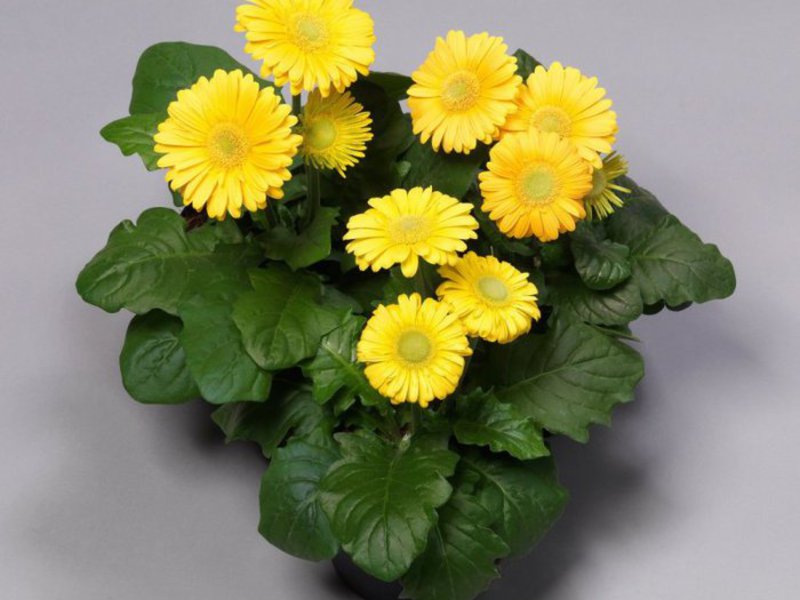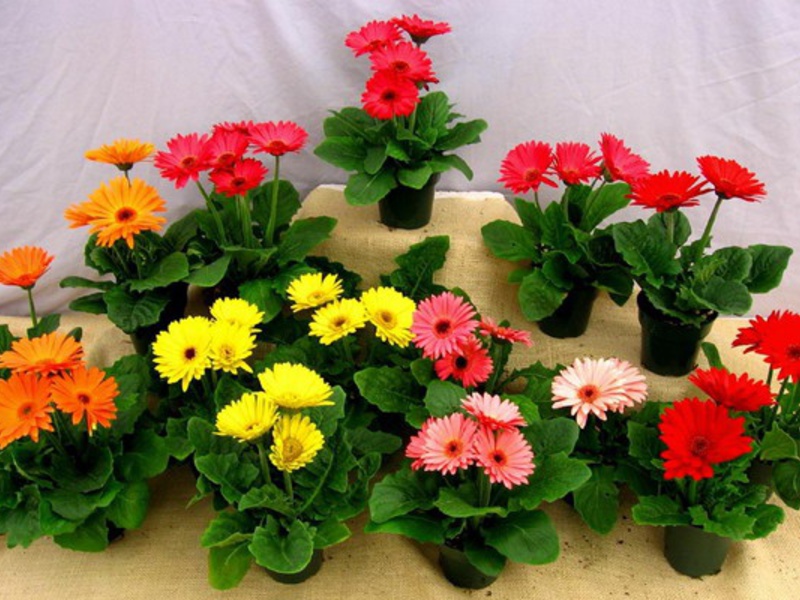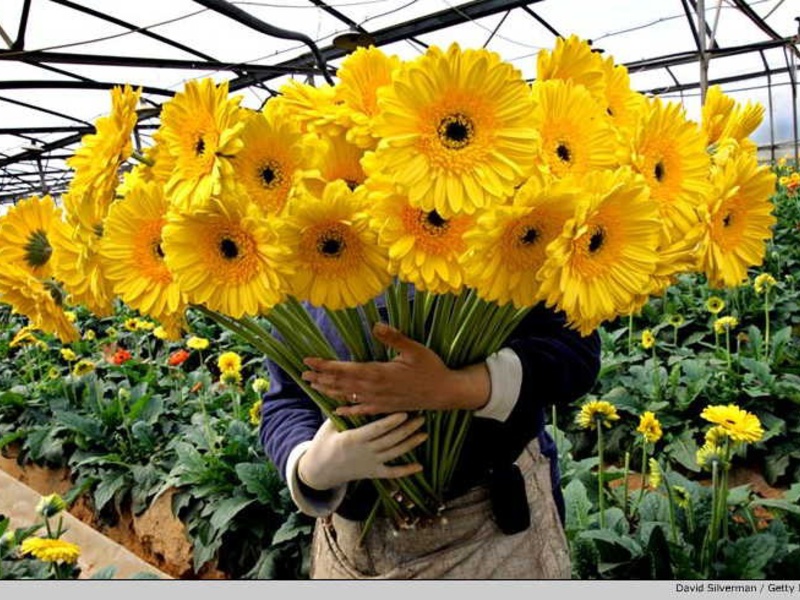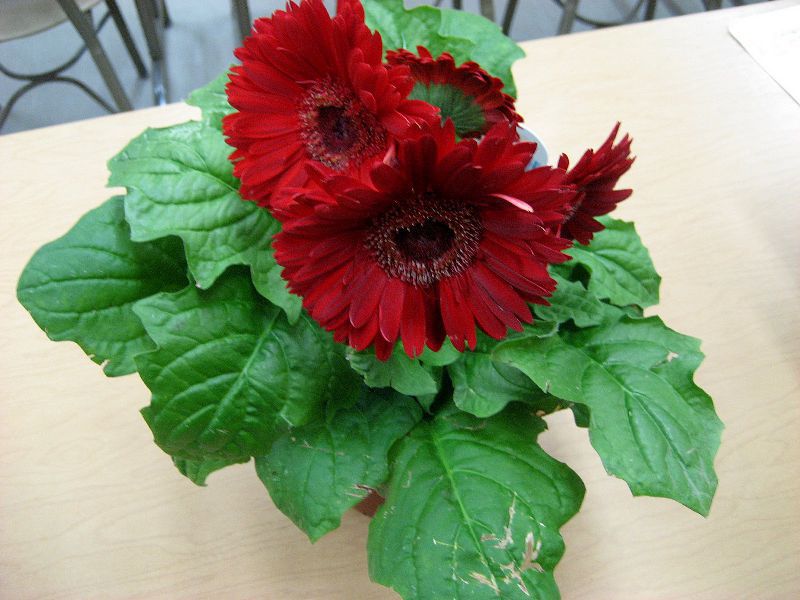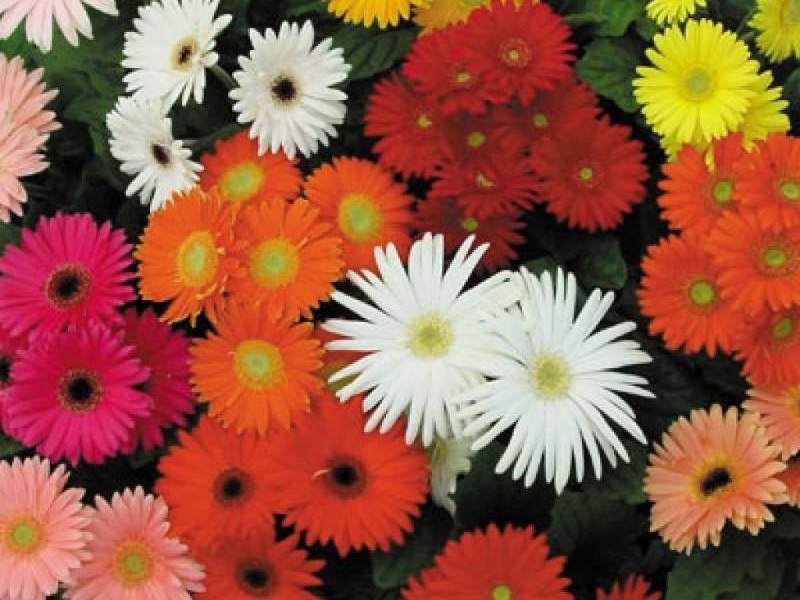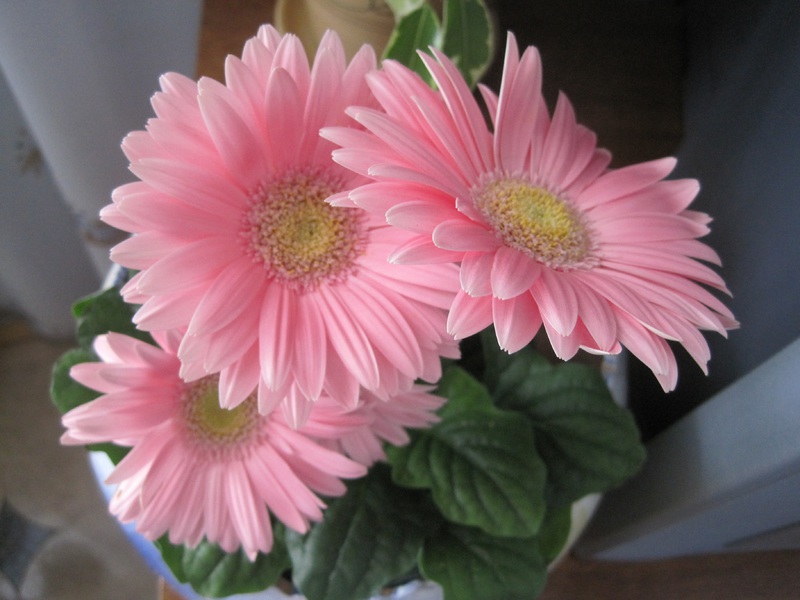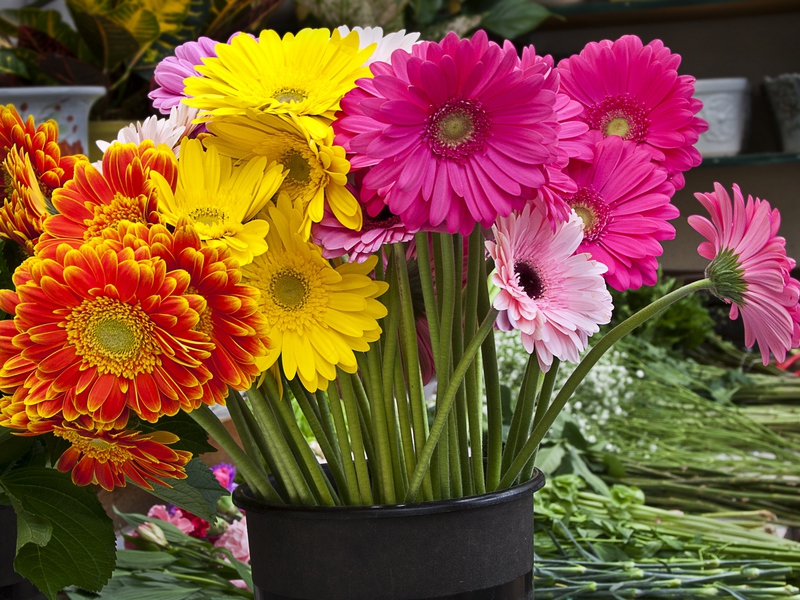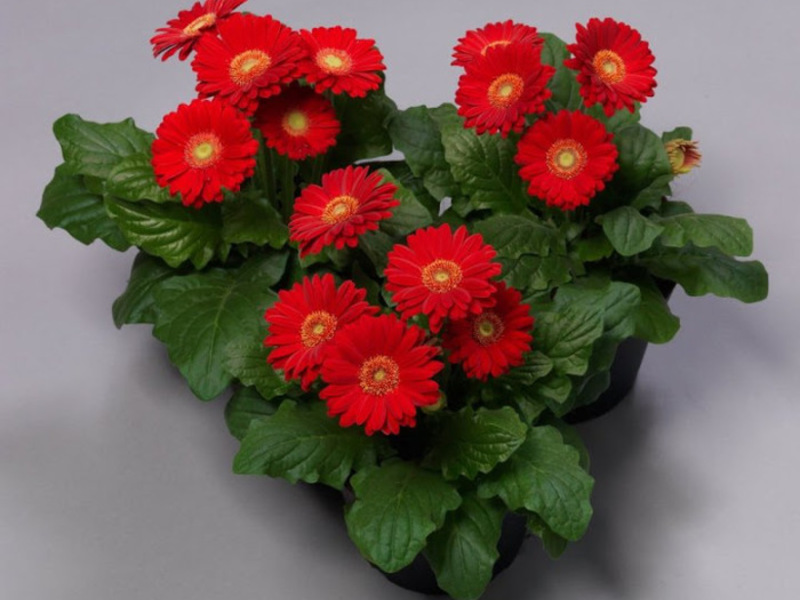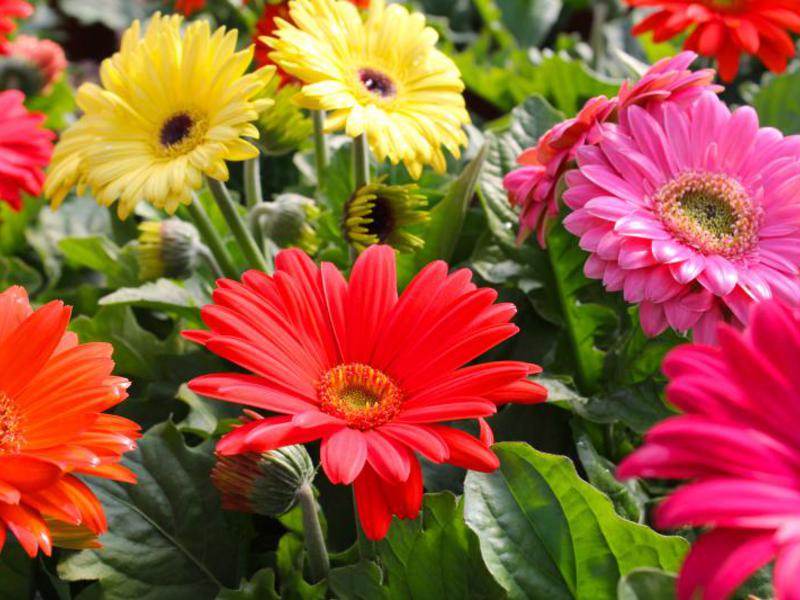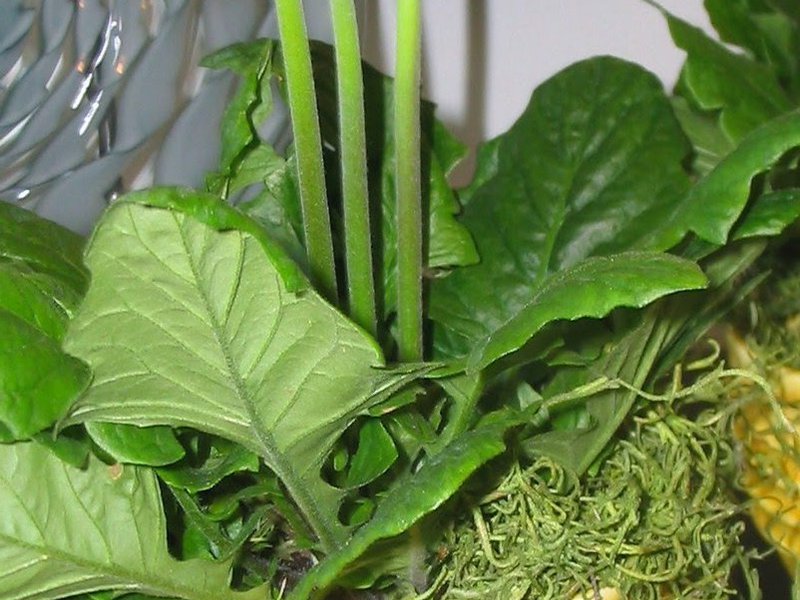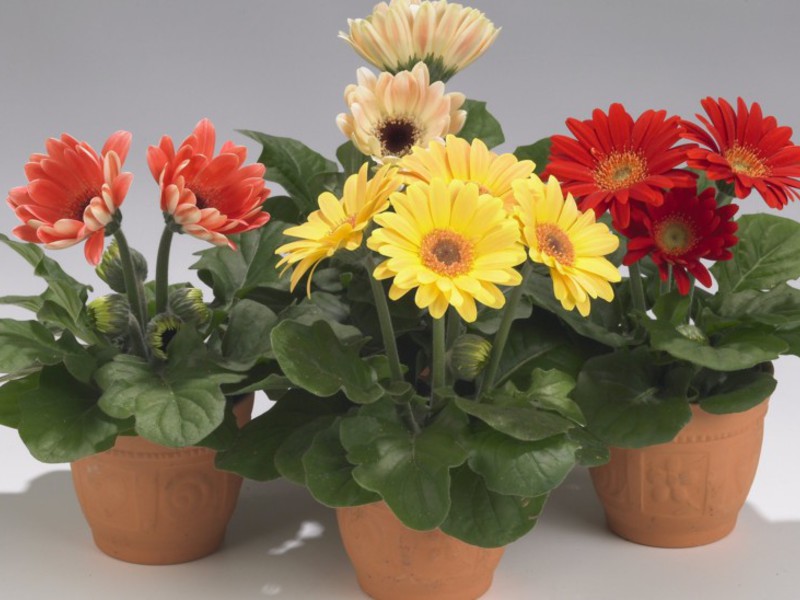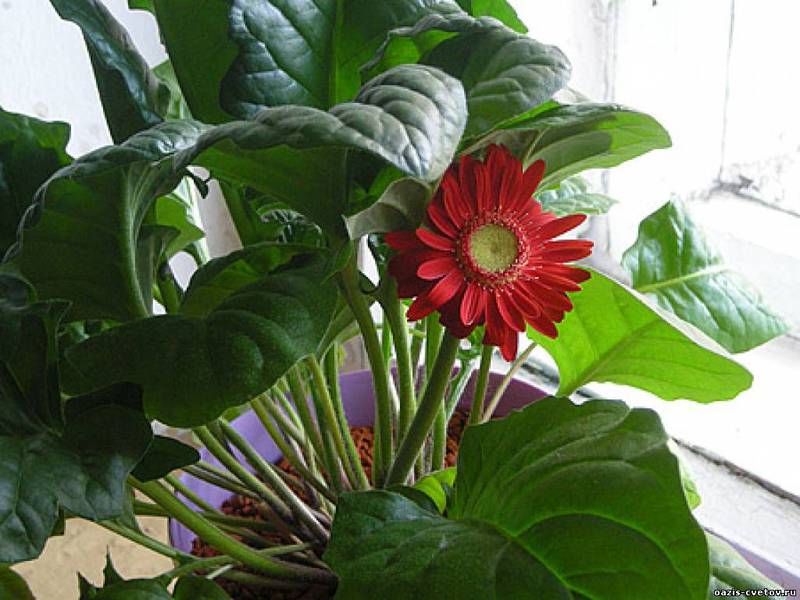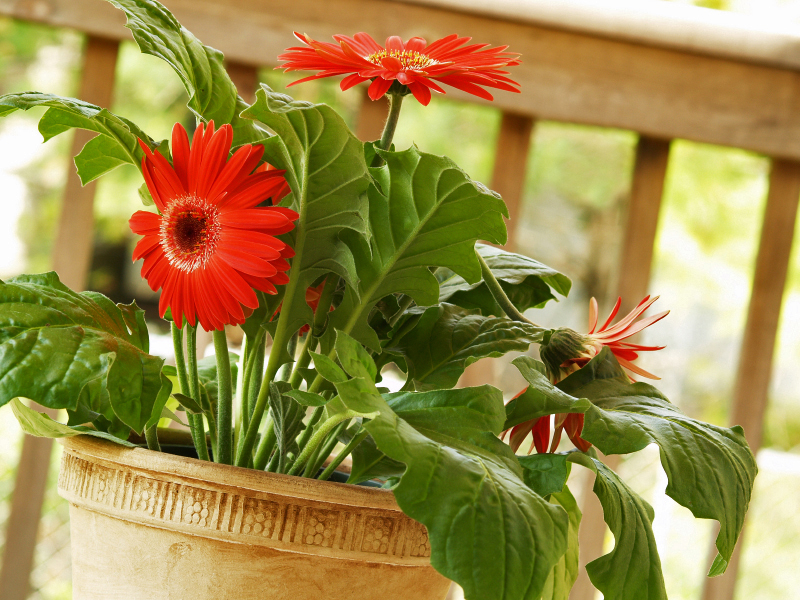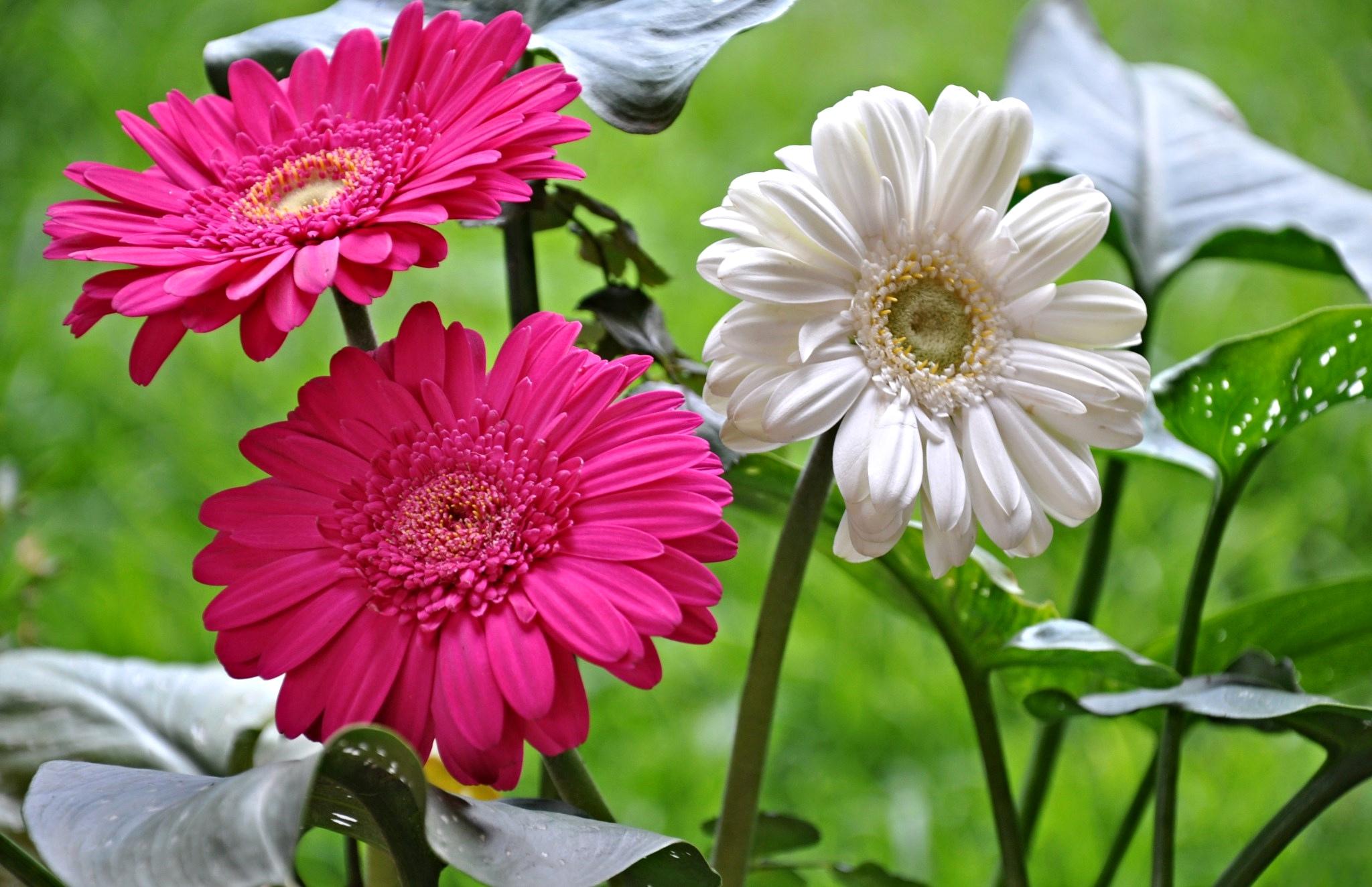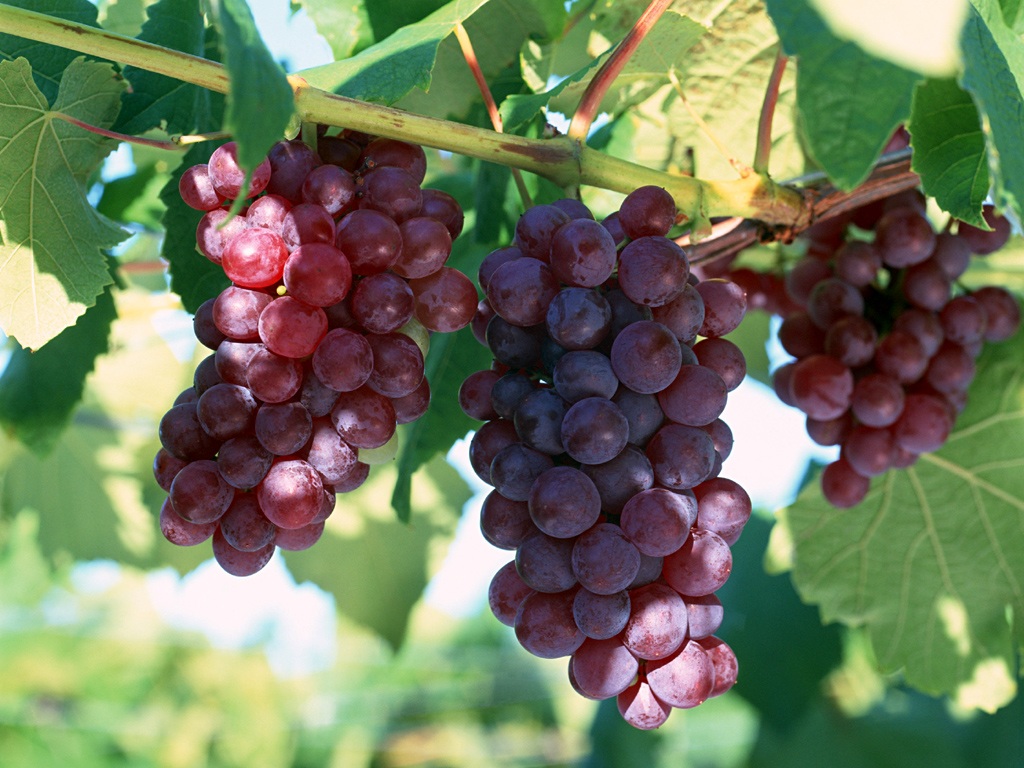Gerberas are flowers that represent purity, generosity, modesty. This is what makes them especially popular. Gerberas are presented to people who want to show respect and special appreciation.
Photos of gerberas fascinate with rich colors, gracefully carved in the shape of petals. Flowers can decorate any room. But they definitely need to be provided with proper care.
Features of the content
Gerbera is a perennial plant with medium-sized flowers, as seen in the photo. Has different colors and extraordinary shades, usually bright and saturated.
Home gerberas in care are quite whimsical. Therefore, before buying, you should carefully study the information on flower care.
These are very thermophilic plants. They cannot actively grow on the street. They are grown in greenhouses as well as at home. If you create the right care, then the flowers will grow well, saturating the room with a pleasant aroma.
In addition to heat, they need a lot of light. It's great if the sun's rays fall on them.
The soil should not be too wet. The room needs to be ventilated regularly.
When watering, water should not fall on the flower. The plant can be sprayed occasionally. Excess moisture can lead to the appearance of any disease.
Varieties and types of gerberas
In floriculture, gerberas are represented by a large number of varieties, each has specific features and characteristics.
Most in demand:
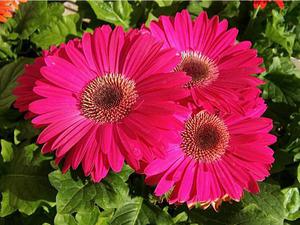 Gerbera Jameson. This is the first flower of this species. It begins to bloom in early spring and before the first days of autumn. The cut plant can be kept in a vase of water for up to three weeks.
Gerbera Jameson. This is the first flower of this species. It begins to bloom in early spring and before the first days of autumn. The cut plant can be kept in a vase of water for up to three weeks.- Gerber Wright. This gerbera in the photo looks like a masterpiece of nature, but requires a special attitude towards itself. She, in addition to light and heat, needs fresh air and frequent watering.
- Narrow-petaled gerberas are also in demand by flower growers. They are small-flowered and large-flowered.
Planting flowers and care
When planting flowers, the following conditions must be taken into account:
- They cannot be grown in the garden. In winter they will die.
- You can plant them on the site annually, since these flowers are annual. But the method is very expensive.
- Growing a flower at home is the best solution.
Gerbera care includes:
- correct feeding with a lot of iron, calcium and potassium. This will help avoid plant diseases;
- the air temperature in the room should not fall below + 20 degrees C;
- the best place is the windowsill. But double-glazed windows must not allow cold air to pass through;
- dry leaves and faded flowers must be removed in a timely manner. Otherwise, the growth of the plant will slow down;
- the soil for the flower is selected neutral, having a certain moisture;
- watering the plant is necessary only with warm water.
Plant transplant
A flower transplant is very often required. It is performed in the following sequence:
- transplant the plant only in the fall;
- the pot should be large for the comfort of the gerbera;
- the soil should be moist and enriched with the necessary dressing;
- for drainage, you can take expanded clay;
- only the roots descend into the hole, and the root collar is on the surface of the earth. This will help prevent the plant from rotting.
Reproduction of gerberas
Three methods are used for plant propagation:
- With the help of the obtained seeds.
- By dividing the sheet.
- Cuttings.
The second way is the simplest. In the spring, one leaf is divided into several fragments. They should be planted in the ground and watered well.
If you want to plant seeds, then this is done in winter. Seeds are placed in the ground, leaving a distance between rows of 2 cm. The air temperature should not be lower than 18 degrees C. With properly created plants for growth, seedlings can appear within a week.
Plant pests and diseases
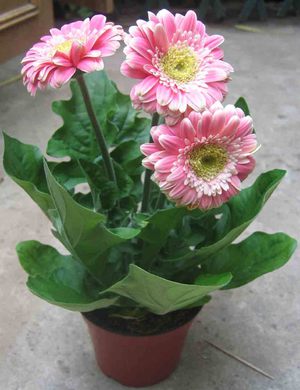 Lack of moisture in the soil and air are excellent conditions for the emergence of spider mites. The leaves will turn yellow and fall off. If the soil is waterlogged, white or gray mold will appear.
Lack of moisture in the soil and air are excellent conditions for the emergence of spider mites. The leaves will turn yellow and fall off. If the soil is waterlogged, white or gray mold will appear.
Immediately it is necessary to reduce the amount of moisture, clean the gerberas from the affected leaves, spray the plant with copper sulfate.
Excessive nitrogen fertilization and watering with cold water can lead to powdery mildew infection.
It affects gerbera and late blight. The reason is improper watering of the flower.
Fitoverm and Spindor can be used for thrips and ticks. Processing is carried out 3 times after 7 days.
Diseased flowers should be isolated from healthy ones.
Cut flower care
Gerberas are usually used by florists for room decoration, for compositions and bouquets. When properly handled, the plant will decorate your home for up to three weeks.
It must be saturated with water after moving into the home. For this, an oblique cut is made in water with a knife. The stems should be trimmed daily. The shorter the stem, the longer the bouquet will stand in the water.
Growing this wonderful flower is not difficult at all. AND gerbera flowers (photo below) will decorate any room with their unsurpassed appearance.
